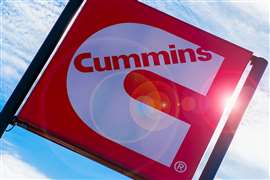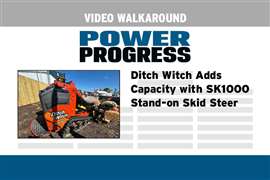It’s Official: Stage 5 Emissions Rules Approved
05 July 2016
The Stage 5 diesel engine regulations to tighten emissions limits for particulate matter (PM) and nitrogen oxides (NOx) for mobile equipment such as farm, construction and material handling machinery as well as equipment used for municipal and road operation services was today finally approved by the European Parliament.
Stage 5 is set to reduce emissions further by setting stricter limits, by introducing particulate number limits and by extending the scope of the regulation to additional power categories. The new regulations will — for the first time — include the smallest (below 19kW) and largest (greater than 560 kW) engines, setting a minimum stringency over the entire power range from 2019.
Further to the parliament’s final vote in today’s session, the European Council’s adoption is expected to take place in the coming weeks. Publication of the regulation will follow shortly.
Supplementary legislation is also being finalized which covers technical requirements and administrative provisions. This is expected to be adopted before the end of the year.
European manufacturers represented by their respective trade associations CECE (construction equipment), CEMA (agricultural machinery), EGMF (garden equipment), EUnited Municipal Equipment (municipal & road operation equipment) and FEM (materials handling equipment) welcomed the final outcome.
“The final compromise found between the EU institutions strikes a good balance between improving air quality and maintaining the competitiveness of the European machine manufacturing industry,” said Ulrich Adam, secretary general of CEMA.
The organizations said this balance was achieved thanks to a number of adjustments introduced during the legislative process, whilst keeping the original emission limits and introduction dates for land-based machinery as proposed by the European Commission.
Adjustments include an extension of the general transition scheme by six months (24 months in total) to give European machine manufacturers sufficient time to redesign their fleets to comply with the new requirements. Furthermore, introducing a provision on replacement engines with a time limit of 20 years will allow for a continued use of machinery using replacement engines, thereby contributing to the EU’s objectives on resource efficiency, the organizations added.
“Overall, the new regulation sets an ambitious timeline,” said Sigrid de Vries, secretary general of CECE. “It will remain a challenge to redesign the hundreds of machinery types and applications in the timeframe given, but the machine manufacturing industries are committed and capable to make these necessary adjustments and contribute to improving air quality in Europe.”
Importantly, the special needs of small and medium-sized enterprises (SMEs) as well as the high level of specialization throughout the sector, have been reflected in the final compromise. For certain types of machines and enterprises, such as mobile cranes and narrow tractors, further transitional provisions were foreseen to cater for their specific needs, said the trade associations in a joint statement.
POWER SOURCING GUIDE
The trusted reference and buyer’s guide for 83 years
The original “desktop search engine,” guiding nearly 10,000 users in more than 90 countries it is the primary reference for specifications and details on all the components that go into engine systems.
Visit Now
STAY CONNECTED




Receive the information you need when you need it through our world-leading magazines, newsletters and daily briefings.
CONNECT WITH THE TEAM












